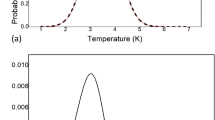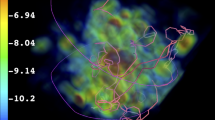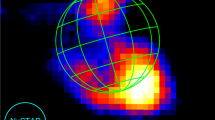Abstract
THE results of two series of experiments on the action of cosmic radiation on experimental tuberculosis in mice are reported below. In the first series, eighty mice were injected intravenously in Leyden (sea-level) with 1 mgm. of tubercle bacilli and transported four days later to the Jungfraujoch (3,457 m.). One group was exposed to the direct action of cosmic radiation, a second group was placed under 2 cm. of lead, which gave the maximum intensity of showers, a third group was screened from cosmic radiation, and a fourth group was exposed to daylight and ultraviolet light down to 3,300 A., being thus subjected only to the hard component of the cosmic radiation. The first three groups were placed in a room without daylight, illuminated by a 40-watt electric lamp.
This is a preview of subscription content, access via your institution
Access options
Subscribe to this journal
Receive 51 print issues and online access
$199.00 per year
only $3.90 per issue
Buy this article
- Purchase on Springer Link
- Instant access to full article PDF
Prices may be subject to local taxes which are calculated during checkout
Similar content being viewed by others
References
Rich, A. R., and Follis, R. H., jun., Bull. Johns Hopkins Hosp., 71, 345 (1942).
Ong S., G., de Jong, L. E. den Dooren, and Schornagel, H. E., Proc. Kon. Ned. Akad. v. Wetensch., 51, 106 (1948).
Author information
Authors and Affiliations
Rights and permissions
About this article
Cite this article
ONG, S. Influence of Cosmic Radiation on Experimental Tuberculosis. Nature 163, 244–245 (1949). https://doi.org/10.1038/163244a0
Issue Date:
DOI: https://doi.org/10.1038/163244a0
This article is cited by
Comments
By submitting a comment you agree to abide by our Terms and Community Guidelines. If you find something abusive or that does not comply with our terms or guidelines please flag it as inappropriate.



